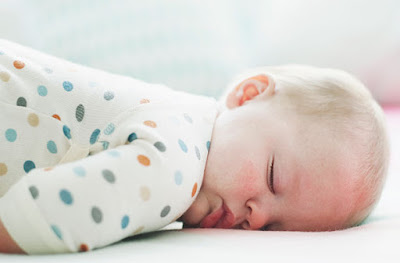According to the baseline evaluation of current sudden infant death syndrome (SIDS) data, the American Academy of Pediatrics recommends that healthy infants, when being put down to sleep, be placed on their backs. The exact reason for this finding is not certain, but it may be related to findings that suggest that an infant who sleeps on her stomach gets less oxygen or gets rid of carbon dioxide less because she is “rebreathing” the air from a small pocket of bedding pulled up around the nose.
SIDS occurs when a baby can’t get enough air to breathe due to the positioning of his/her body. This happens most often in infants, when an infant dies and is found in a position where his/her mouth and nose is blocked, or where his/her chest may be unable to fully expand. It is felt that the positioning of the infant led to a lack of oxygen and a death by asphyxia (suffocation.) Examples include an infant found wedged between a mattress and the wall, an infant sleeping on a couch with an adult who is found with his face pushed against the cushions of the couch.
According to the NICHHD, sudden infant death syndrome is technically defined as “the sudden death of an infant under one year of age, which remains unexplained after a thorough case investigation, including performance of a complete autopsy, examination of the death scene, and review of the clinical history.”
SIDS is a parent’s worst fear. An apparently healthy baby with no obvious previous or present illness goes to sleep and never wakes up.
Putting your baby to sleep on his back decreases his chance of sudden infant death syndrome (SIDS). Despite common beliefs, there is no evidence that choking is more frequent among infants lying on their backs (the supine position) when compared to other positions, nor is there evidence that sleeping on the back is harmful to healthy babies
SLEEP POSITIONS FAVOURABLE FOR YOUR INFANT
1. Back to sleep
The AAP recommends that all infants be placed to sleep on their backs. Some doctors once thought that sleeping on the side might be a reasonable alternative to back positioning, but recent evidence has shown that side sleeping also should be avoided for safety reasons. But other recommendations for healthy sleep include these: A firm sleeping surface is safest (such as a firm mattress covered by a sheet). Fluffy mattress covers or sheepskins should be avoided for sleeping. Skip loose bedding and stuffed animals. Make sure any crib bumpers are thin, firm, and securely attached to the crib sides.
2. Sleep alone
If baby falls sleep in your arms, on the couch, on pillows, etc., and you don’t have a crib handy and/or you need to leave the area or are falling asleep yourself – put the baby on his/her back on the floor. It is safer than the sofa or chair.
3. Avoid over-heating
Avoid over-heating your baby. Buy sleepers that can double as a blanket. If you feel you must use a blanket, tuck it in the mattress and make sure the top only reaches the baby’s chest. Keep room temperature 70 in winter.
4. Use pacifier
Pacifiers also may help reduce the risk of SIDS. However, if your baby doesn’t want the pacifier or if it falls out of her mouth, don’t force it. If you are breastfeeding, wait until breastfeeding is well established, usually around three or four weeks of age, before using a pacifier. While sleeping on the back is important, your baby also should spend some time on her stomach when she is awake and being observed. This will help to develop her shoulder muscles and her head control, and avoid the development of flat spots on the back of her head
Keep all soft toys and stuffed animals out of your child’s crib throughout infancy. Keep the temperature in your baby’s room comfortable and do not place her near air-conditioning or heating vents, open windows, or other sources of drafts.
NB: Watch out for and take the measures to prevent a disformed shape of head on your happy, healthy, back-sleeping baby.





Leave a Reply